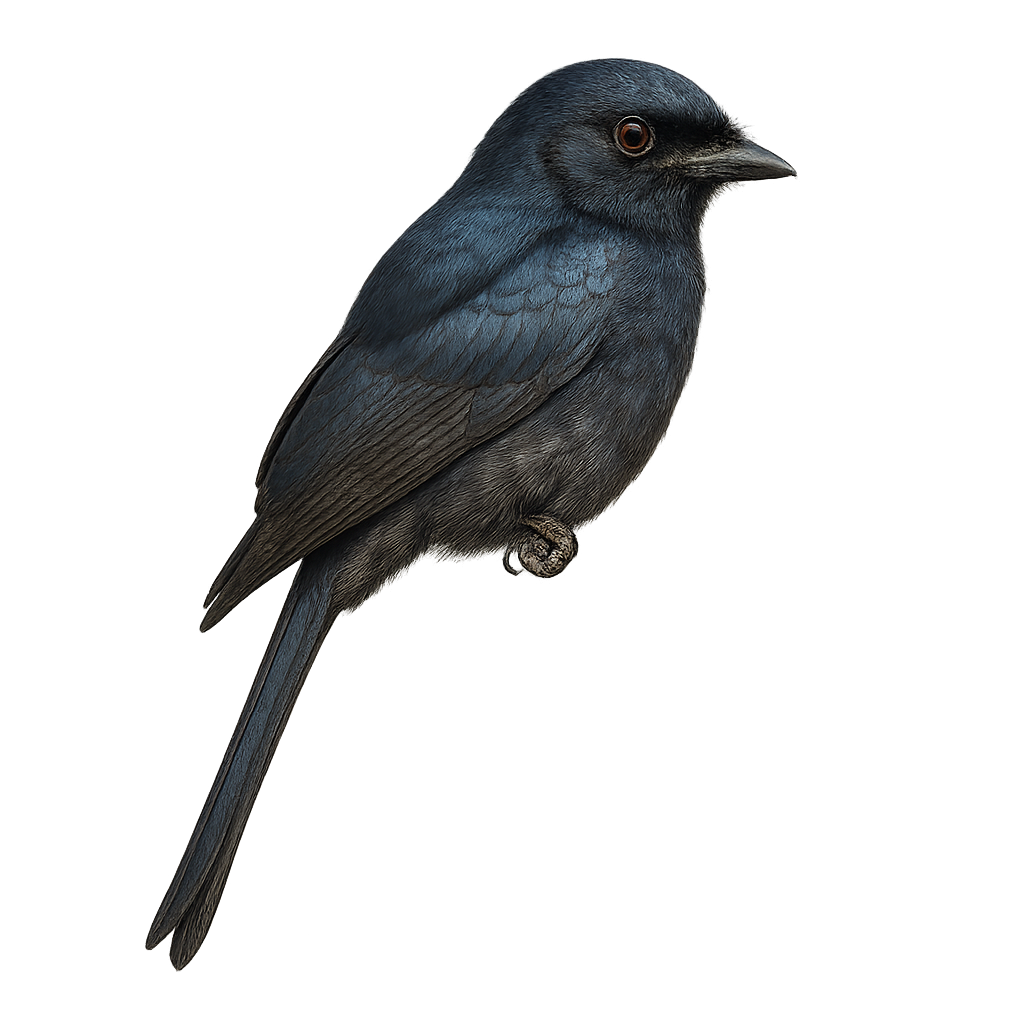Your wildlife photography guide.
Explore the fork-tailed drongo in detail, study its behavior, prepare your shots.
Where to observe and photograph the fork-tailed drongo in the wild
Learn where and when to spot the fork-tailed drongo in the wild, how to identify the species based on distinctive features, and what natural environments it inhabits. The WildlifePhotographer app offers tailored photography tips that reflect the fork-tailed drongo’s behavior, helping you capture better wildlife images. Explore the full species profile for key information including description, habitat, active periods, and approach techniques.
Fork-tailed Drongo
Scientific name: Dicrurus adsimilis

IUCN Status: Least Concern
Family: DICRURIDAE
Group: Birds
Sensitivity to human approach: Suspicious
Minimum approach distance: 10 m
Courtship display: October to November
Incubation: 14-16 jours
Hatchings: October to December
Habitat:
Savannas, open forests, agricultural areas
Activity period :
Primarily active during the day, with peak activity in the morning and late afternoon.
Identification and description:
The Fork-tailed Drongo, Dicrurus adsimilis, is a medium-sized bird known for its glossy black plumage and distinctive forked tail. It is commonly found in open forests, savannas, and agricultural areas across sub-Saharan Africa. This drongo is noted for its bold and aggressive behavior, often attacking larger predators to defend its territory. It primarily feeds on insects but can also consume small vertebrates. Its varied and melodious song is often heard at dawn and dusk. The Fork-tailed Drongo is also famous for its ability to mimic the calls of other birds, allowing it to deceive competitors and steal their food.
Recommended lens:
400 mm – adjust based on distance, desired framing (portrait or habitat), and approach conditions.
Photography tips:
To photograph the Fork-tailed Drongo, it is advisable to use a telephoto lens of at least 400mm to capture precise details without disturbing the bird. Look for it in savannas or open forests, where it often perches on exposed branches. Be patient and wait for it to engage in aerial acrobatics to catch insects. Take advantage of morning or afternoon light to achieve images with good contrast and vibrant colors.
The WildlifePhotographer App is coming soon!
Be the first to explore the best nature spots, track rutting seasons, log your observations, and observe more wildlife.
Already 1 428 wildlife lovers subscribed worldwide

